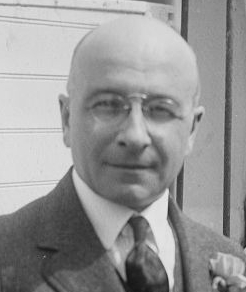
Alexis Carrel was a French surgeon and biologist who was awarded the Nobel Prize in Physiology or Medicine in 1912 for pioneering vascular suturing techniques. He invented the first perfusion pump with Charles A. Lindbergh opening the way to organ transplantation. His positive description of a miraculous healing he witnessed during a pilgrimage earned him scorn of some of his colleagues. This prompted him to relocate to the United States, where he lived most of his life. He had a leading role in implementing eugenic policies in Vichy France.
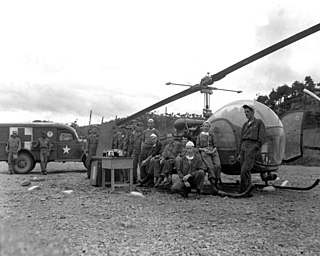
Mobile Army Surgical Hospitals were U.S. Army field hospital units conceptualized in 1946 as replacements to the World War II-era Auxiliary Surgical Group hospital units which had became obsolete. MASH units had 60 beds, surgical, nursing, and other enlisted and officer staff available at all times. Often working long hours to save lives in many wars, MASH Units were in operation from the Korean War all the way to the Gulf War and they were phased out in the early 2000s. MASH units filled a very vital role in military medicine by providing support to army units upwards of 10,000 to 20,000 soldiers. There was a low mortality rate as a whole coming from these units as the transportation time to hospitals was low resulting in fewer patients dying within the "Golden Hour", the first hour after an injury to a person which is referred to in trauma as the most important hour. This is because mobility and mortality have the highest chances of being kept for a patient, which is one of the reasons why MASH units were located so close to the front lines. The term was made famous in the novel, movie, and television series M*A*S*H, which depicted a fictional MASH unit. The U.S. Army deactivated the last MASH unit on February 16, 2006. The successor to the Mobile Army Surgical Hospital is the Combat Support Hospital.
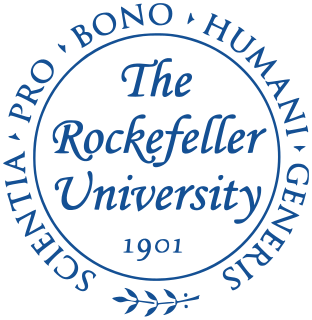
The Rockefeller University is a private graduate-only university in New York City. It focuses primarily on the biological and medical sciences and provides doctoral and postdoctoral education. It is classified among "R2: Doctoral Universities – High research activity". Rockefeller is the oldest biomedical research institute in the United States. The 82-person faculty has 37 members of the National Academy of Sciences, 17 members of the National Academy of Medicine, seven Lasker Award recipients, and five Nobel laureates. As of March 2022, a total of 26 Nobel laureates have been affiliated with Rockefeller University.
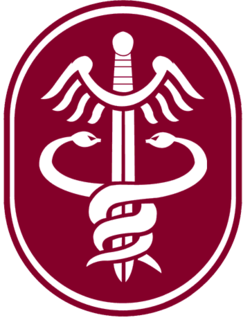
The U.S. Army Medical Command (MEDCOM) is a direct reporting unit of the U.S. Army that formerly provided command and control of the Army's fixed-facility medical, dental, and veterinary treatment facilities, providing preventive care, medical research and development and training institutions. On 1 October 2019, operational and administrative control of all military medical facilities transitioned to the Defense Health Agency.

The Walter Reed Army Medical Center (WRAMC) – known as Walter Reed General Hospital (WRGH) until 1951 – was the U.S. Army's flagship medical center from 1909 to 2011. Located on 113 acres (46 ha) in the District of Columbia, it served more than 150,000 active and retired personnel from all branches of the military. The center was named after Major Walter Reed (1851–1902), an Army physician who led the team that confirmed that yellow fever is transmitted by mosquitoes rather than direct contact.

The Army Medical Department of the U.S. Army (AMEDD), formerly known as the Army Medical Service (AMS), encompasses the Army's six medical Special Branches. It was established as the "Army Hospital" in July of 1775 to coordinate the medical care required by the Continental Army during the Revolutionary War. The AMEDD is led by the Surgeon General of the U.S. Army, a lieutenant general.
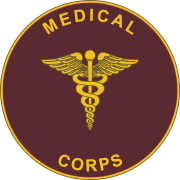
The Medical Corps (MC) of the U.S. Army is a staff corps of the U.S. Army Medical Department (AMEDD) consisting of commissioned medical officers – physicians with either an M.D. or a D.O. degree, at least one year of post-graduate clinical training, and a state medical license.

Henry Drysdale Dakin FRS was an English chemist.

William Beaumont Army Medical Center is a Department of Defense medical facility located in El Paso, Texas. It provides comprehensive care to all beneficiaries including active duty military, their family members, and retirees. The hospital is located in the Central/Northeastern part of El Paso, and provides emergency department services for Northeast El Paso. The current 1.1-million-square-foot, 6-building medical complex opened July 10, 2021 on East Fort Bliss. WBAMC is affiliated with the Paul L. Foster School of Medicine which is also located in El Paso, Texas. WBAMC is also a participating hospital for medical residents from the Uniformed Services University of the Health Sciences (USU) and nursing students from the University of Texas at El Paso School of Nursing and the El Paso Community College Nursing School. The current commander of WBAMC is Colonel Brett Venable.

The Surgeon General of the United States Army is the senior-most officer of the U.S. Army Medical Department (AMEDD). By policy, the Surgeon General (TSG) serves as Commanding General, U.S. Army Medical Command (MEDCOM) as well as head of the AMEDD. The surgeon general's office and staff are known as the Office of the Surgeon General (OTSG) and are located in Falls Church, Virginia.

John Auer was an American physiologist and pharmacologist. He published nearly 150 papers during his career and is credited with the first description of Auer rods. Auer also contributed to the study of anaphylaxis and helped develop modern thoracic surgery. During World War I, he conducted wartime research with the Rockefeller Institute for Medical Research.

The U.S. Army Public Health Center (APHC) is a United States Army element headquartered at Aberdeen Proving Ground, Maryland, United States. As a forward operating agency of the United States Army Medical Command, APHC is responsible for providing technical support and expertise in the areas of preventive medicine, public health, health promotion, and wellness to military units around the globe.

The United States Army Nurse Corps was formally established by the U.S. Congress in 1901. It is one of the six medical special branches of officers which – along with medical enlisted soldiers – comprise the Army Medical Department (AMEDD).
The PROFIS or Professional Filler System is used by the United States Military to fill voids in personnel when a unit deploys on a combat or humanitarian mission. Due to the high financial cost of employing physicians, civil engineers, lawyers or other "high dollar specialists" in a military unit, usually at the battalion and sometimes at the brigade level a full time "specialist" is not permanently assigned to these units. When a unit deploys to an austere location, the demand for a specialist increases. The military's solution is to have a PROFIS or assigned specialist to these units that only serves with the unit when they deploy.

Florence Aby Blanchfield was a United States Army Colonel and superintendent of the Army Nursing Corps, from 1943 to 1947. She was awarded the Distinguished Service Medal in 1945, and the Florence Nightingale Medal by the International Red Cross in 1951. In 1947 Blanchfield became the first woman to receive a military commission in the regular army.

Helen Grace McClelland , a United States Army nurse, was awarded the United States Distinguished Service Cross and the British Royal Red Cross Medal for heroic actions during World War I while serving at a British Base Hospital in France. McClelland was one of only three women to receive the Distinguished Service Cross award during World War I. After returning to the United States, McClelland spent twenty-three years as Director of Pennsylvania Hospital's School of Nursing. In her role, McClelland advocated for the professionalization and modernization of nursing. McClelland was inducted into the Ohio Women's Hall of Fame in 1978.
Colonel Margaret Harper was the 11th chief of the United States Army Nurse Corps (ANC) from September 1, 1959, to August 31, 1963. She served in World War II, received a master's degree in nursing service administration from Columbia University. She received several awards for her work as chief of the Army Nurse Corps (ANC).

U.S. Army General Hospital No. 1, also known as Columbia War Hospital, was a World War I era field hospital built by Columbia University on the Columbia Oval property in Norwood, The Bronx. The hospital was used as a medical training facility, a model for military field hospitals, and for long-term treatment of patients.


















